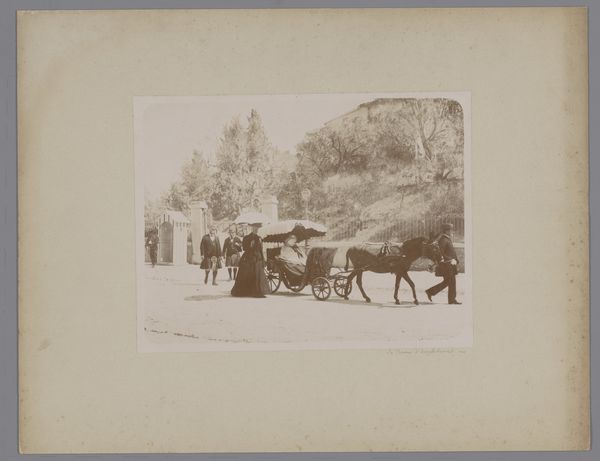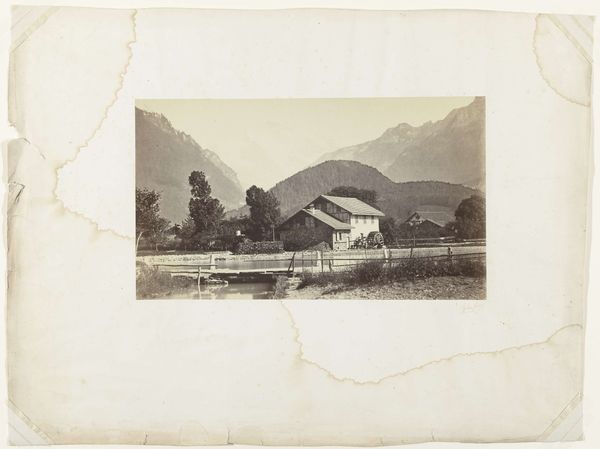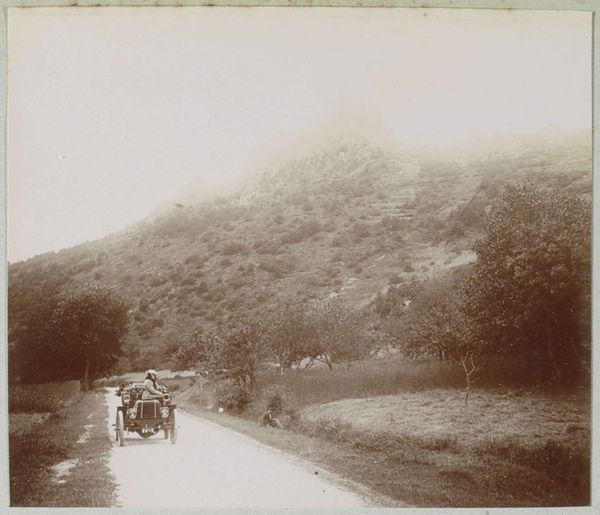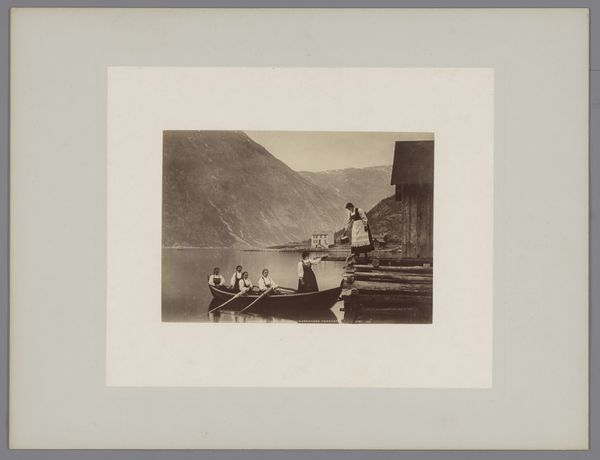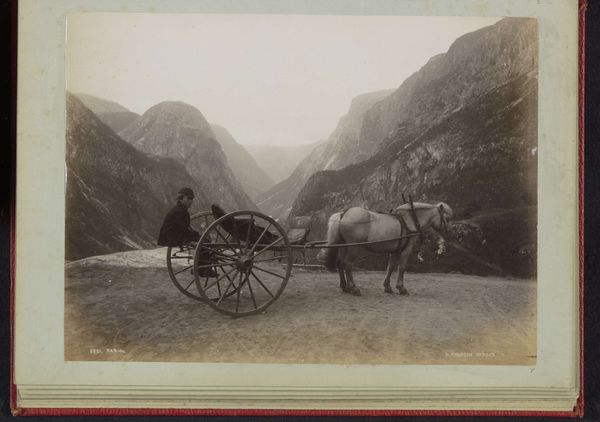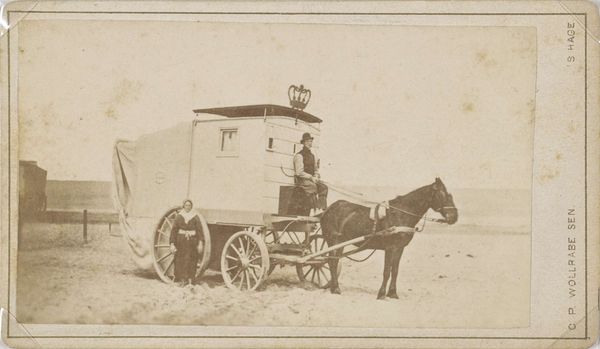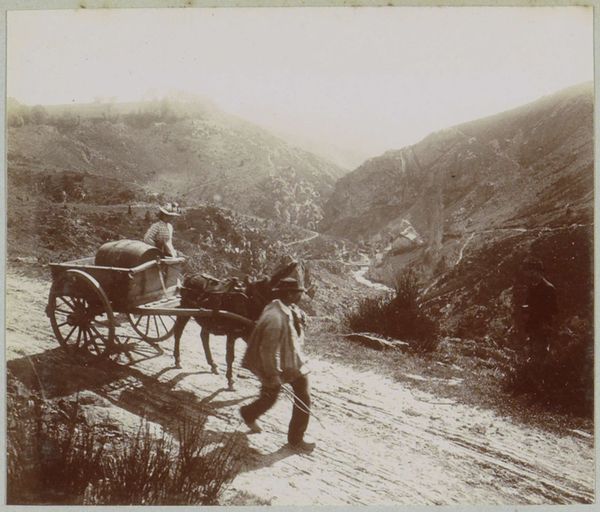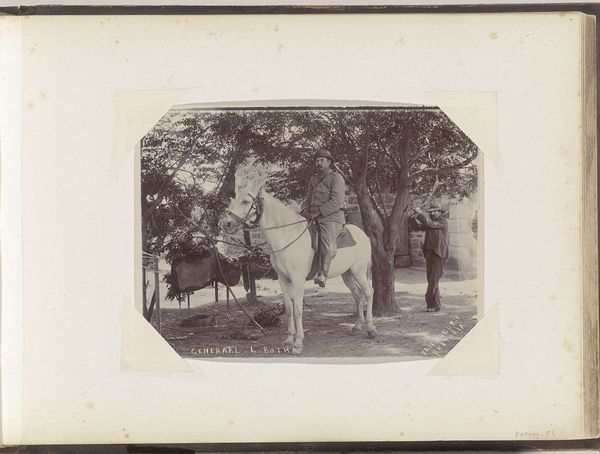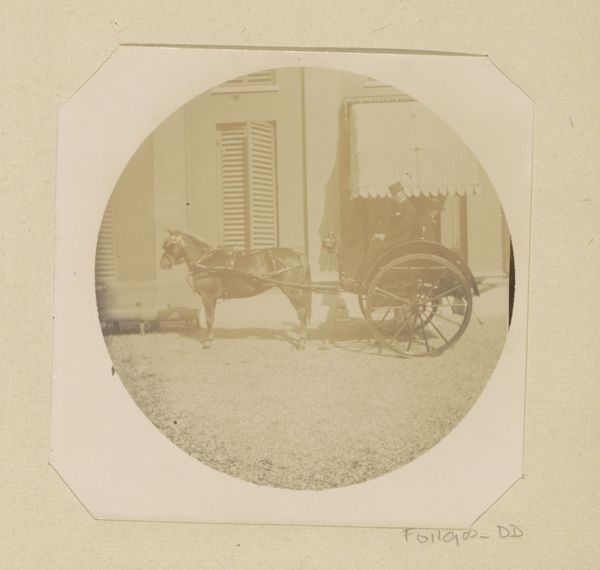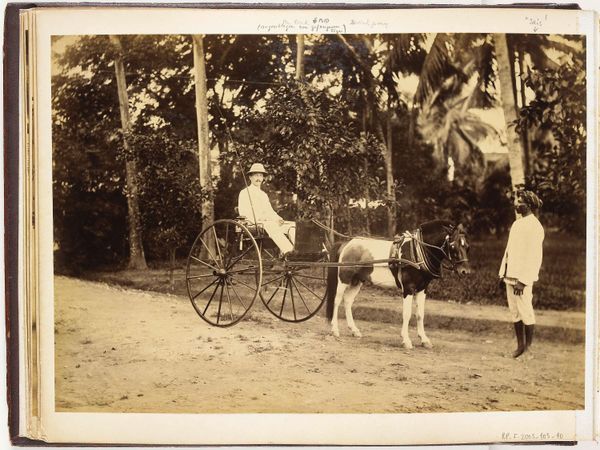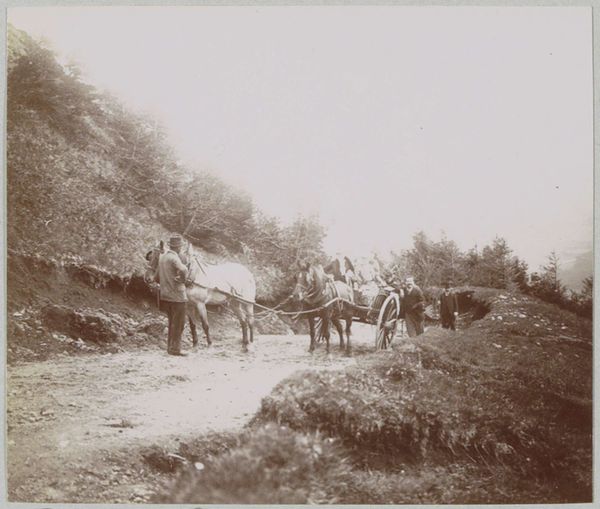
Dimensions: height 153 mm, width 215 mm, height 346 mm, width 454 mm
Copyright: Rijks Museum: Open Domain
Editor: Here we have James Valentine's photograph, "Paard en wagen in Noorwegen" – "Horse and Cart in Norway" – dating somewhere between 1855 and 1880. It's currently housed in the Rijksmuseum. What strikes me is the stillness. Despite the implied potential for movement with the horse and carriage, everything feels quite posed and deliberate. What do you see in this piece, especially considering its time? Curator: It’s important to remember that early photography, especially landscape and genre scenes like this one, were heavily influenced by painting conventions of the time. Photography aimed for legitimacy. Valentine’s work engages in the socio-political discourse of Norway in the late 19th century, its culture, and developing tourist industry. Think about what the photographer might have been trying to capture about Norway for viewers back home and abroad. What stories are told through these deliberate compositions? Editor: So it’s about more than just capturing a pretty scene? I’m just trying to understand what elements support this argument? Curator: Precisely. Consider the chosen perspective – not dramatically scenic, but grounded, accessible. The genre scene depiction lends a sense of authenticity and everyday life, contrasting with romanticized paintings. Consider the socio-economic implications too. The horse and carriage suggest transport and trade in a developing landscape, but also a glimpse of an individual who has some capital. It also makes me wonder, who is the subject and the object? Who is he selling the photograph to and what expectations might they have of this rural, 'quaint' destination? Editor: I never considered that. The horse, the driver, the landscape become part of a marketable experience, and photography plays a key role in shaping that image. Thanks! It definitely reshapes my appreciation for what photography, particularly from this era, was trying to achieve beyond aesthetics. Curator: Exactly. The photograph's public role extends far beyond just documenting a moment; it becomes an active agent in shaping perceptions of place and culture.
Comments
No comments
Be the first to comment and join the conversation on the ultimate creative platform.
